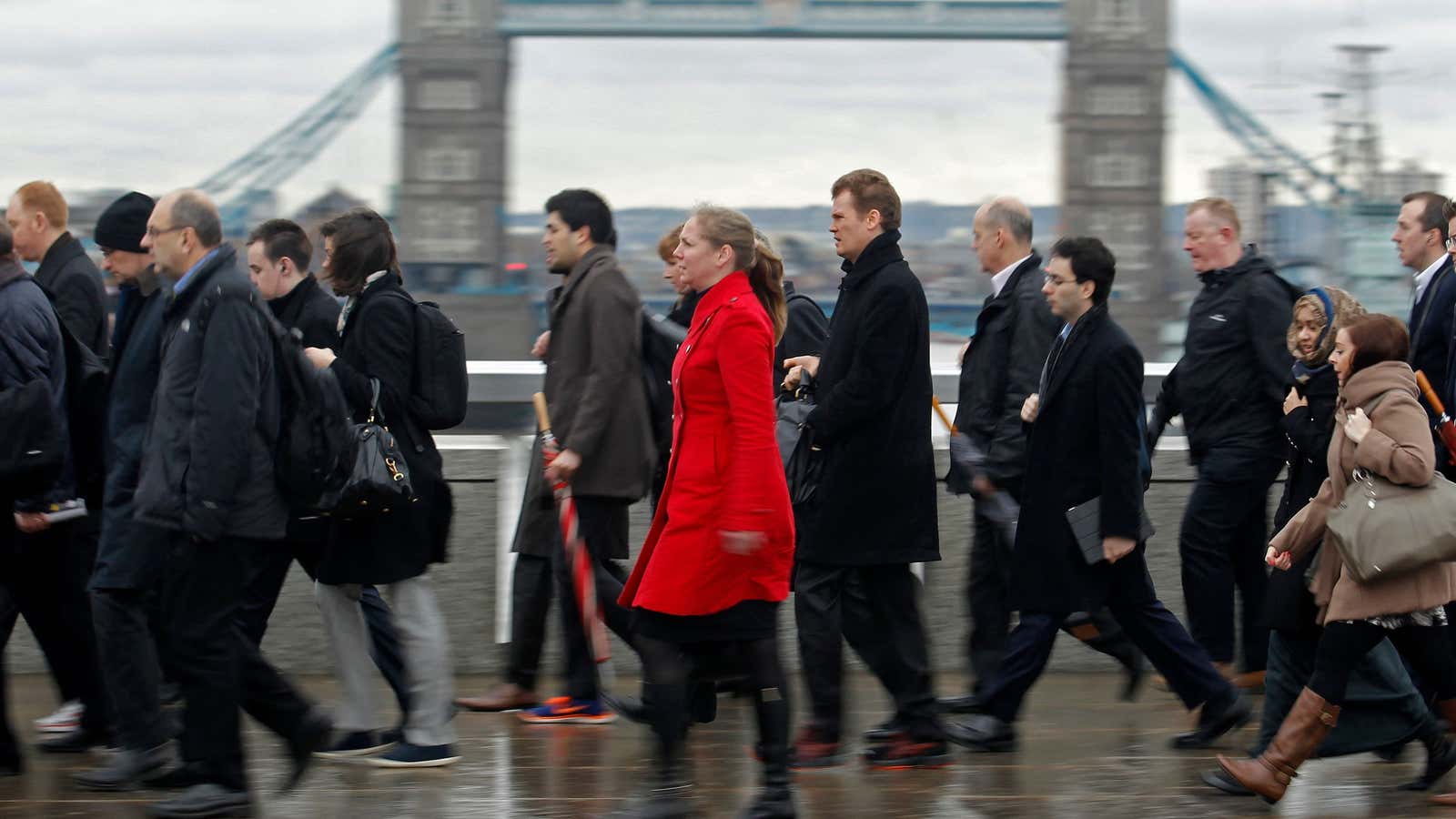The stage-an-experiment-to-prove-a-point genre of public service announcements is long past its prime, but the odd one can still be surprising, even poignant.
Earlier this week, the Mayor of London’s office published one such video PSA, provocatively answering the question, “What does gender inequality in the workplace look like?”
Set in a London subway station, it depicts a navy-blazered man standing in front of a set of stairs and escalators leading to street level. “Hello there, gentlemen, take the escalators please, all the way up,” he tells the approaching men. To female commuters: “Ladies, up the stairs. Thank you.” The men step on the escalator and the women, some with puzzled looks, trudge up the lengthy staircase. And so it continues.
The short video is, at its essence, a statement on how long it takes, and how much work is involved, in women’s advancement within an organization. It was made with a small cast of actors playing real people and “ordinary members of the public who were traveling at that time,” according to a spokesperson for the mayor’s office, who tells Quartz that “many of the reactions filmed were genuine reactions and not scripted.”
Watch below:
The women, presumably socialized to not rock the boat, choose to comply with the unfair situation with only some minor eye-rolling. One even hoists a baby carriage up the steps—with help from another woman who has come to her aid. The men, meanwhile, head up the escalators without hesitation, never stopping to ask about their fellow commuters, accepting their privilege without much thought. For them, the swift ascent is effortless, while many women, including many women of color, clearly endure a workout.
These days, London mayor Sadiq Khan and the UK capital’s city assembly are dedicating much of their public relations airtime to messages about women’s equality and the role women have played in London’s history. Earlier this year, the city launched its #BehindEveryGreatCity campaign, which has so far included the unveiling of a statue to honor British suffragist leader Millicent Fawcett.
The stairs-escalator video was made to introduce “Our Time,” a new program within the city’s public sector that will match high-potential women with sponsors, who tend to be more hands-on and proactive than mentors and can introduce them to the right people, or otherwise provide the kind of aggressive support that’s frequently needed for a woman to advance to leadership levels. Our Time, the press office reports, was inspired by sponsorship programs at two private-sector firms: Mastercard and Sky, the TV and broadband company.
“As a proud feminist, I want London to be a shining light in the fight for gender equality,” Khan said in a statement. He’s also challenging business leaders across the capital city to create their own similar programs.
For a government campaign, this one is particularly biting. The video draws attention to data that do not paint London in a flattering light. One statistic shown in the video says that maternal employment in London is 8% lower than in the rest of the UK; another says the city’s gender pay gap is the largest in the country. And the video notes that among companies in the FTSE 100, only seven of which are led by women (none of whom are women of color or of an ethnic minority), a CEO is “more likely to be called John than be a woman.”
When you’re called John, the ride is that much easier.
